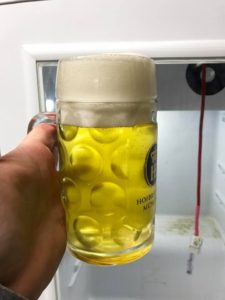
Enter Super Pima®, a custom pilsner malt that will blow your mind…
I have been playing with trying to get the malt right for these beers for quite some time. I found the more I tightened up my system the more the malts I was using tasted wrong. Vienna was giving me way too much fresh dough, even at 5%. Munich was adding a weird, slightly sour twang, along with a muddy flavor, and it was not what I was tasting in the beers I love. We had always previously joked about a super pilsner malt, that only the special German breweries get, so that’s where this name came from. I did some research into custom malting as well as what Kunze and Narziss (among others) had to say about malt color, and determined that I wanted to blend pilsner with as similar a malt like it I could. A fellow colleague Steve looked into blending it with pale ale malt, so I started there, but didn’t have to go far, because it was a home run. Kudos to Steve, and be sure to check out his blog.
So here we are with the pils/pale ale Super Pima® blend. Which is the pilsner malt of your choice (I use Weyermann Barke Pilsner exclusively), and Weyermann’s Pale Ale malt. Working with Big Monk, we came up with a really easy way to blend these malts. Try your custom basemalt blend!. It’s like pilsner malt on steroids, with none of the other flavors I was getting with the addition of the other malts. The pale ale malts lend amazing foam properties and are very flavorful, but not overwhelming malt base profile to layer on top of.
My Pilsner is simply a 50/50 blend. Here is a sample that is currently fermenting, for color reference:
Finished Pilsner with 50/50 blend:
Here is a sample of an Export Helles with a 50/50 blend, along with 3% carahell:
The color of the beers with the blend is pretty much spot on when comparing to commercial examples as are the malt flavors. Try it out!


